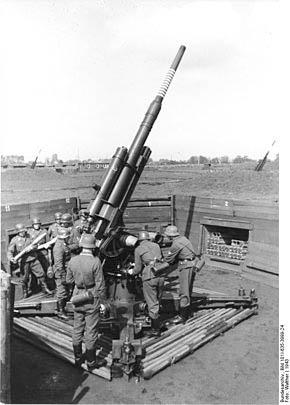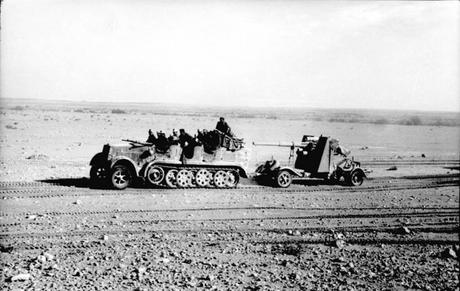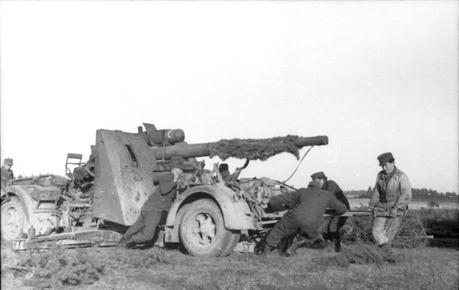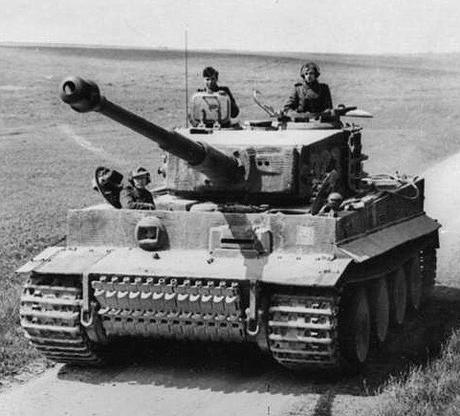posted by author and historian Charles McCain

The famous German 88, the best and most versatile artillery piece of World War Two. While originally developed in World War One and made in many versions, 88’s were devastating as regular artillery pieces, as anti-aircraft guns and as tank killers. On the Eastern Front against the Soviets, one German 88 artillery piece could hold off an attack by dozens of Russian tanks because the 88 far out ranged the Soviet tanks.
Hence the 88 could take them under fire long before the tanks could fire at the 88. It remains a mystery why the Allies didn’t make copies of this artillery piece and use it for themselves.
One disadvantageous feature the 88s was this: the guns were originally designed to be emplaced on the ground. According to US Army records from WW Two, while it only took a well trained crew 2 1/2 to 3 1/2 minutes to emplace an 88, this assumes the 88 was being towed by a heavy truck or prime mover.

A German 88mm artillery piece is towed by a SdKfz 6 half-track in North Africa, April, 1941. The 88mm was typically towed by a half-track that carried the gun crew and ammunition. (Bundesarchive photo via defensemedianetwork.com)

88 being deployed in the Soviet Union circa 1943/44.
However, if one studies photographs of an 88 being removed from its wheeled transport carriage, as in the photograph above, it appears that it would have taken longer than than a few minutes to emplace this heavy artillery piece.
The men had to removed the wheeled transport carriage before firing although in an emergency it could be fired from its wheeled carriage but without the outriggers emplaced into the ground, stability was negatively affected which made accurate fire difficult.
If the 88 had to unloaded from a flatbed rail-car, which was often the case, then it took much longer. Except in a dire emergency, they could not be fired from rail cars because the base of the 88 required four long stability outriggers to be deployed and secured to the ground.
If German units were being overrun by Soviet or Allied troops, they often had to leave their 88s to be captured although they destroyed the breech blocks and dropped grenades down the barrels before retreating.
While the Germans did begin to manufacture self propelled, mobile 88s, their industrial base was too small to turn out adequate numbers of the self propelled guns.

Nordfrankreich, Panzer VI (Tiger I).2
(photo courtesy of the Bundesarchiv Bild 101I-299-1805-16)
A variation of the 88 was mounted on the famous Tiger tank (which took 300,000 man hours to manufacture just one of these tanks) and the even bigger Royal Tiger, made these tanks formidable opponents. No Allied tank could stand alone against a Tiger.
The Royal Tiger was at a certain disadvantage because the gun would not traverse and instead the crew had to move the tank so the barrel pointed in the direction they wanted to fire.
The 88 was a fearsome artillery piece especially as against tanks but also as a general artillery piece and as flak artillery. When using the correct ammunition, the 88 could fire as high as 22,000 feet which was about the altitude of Allied bombers.
